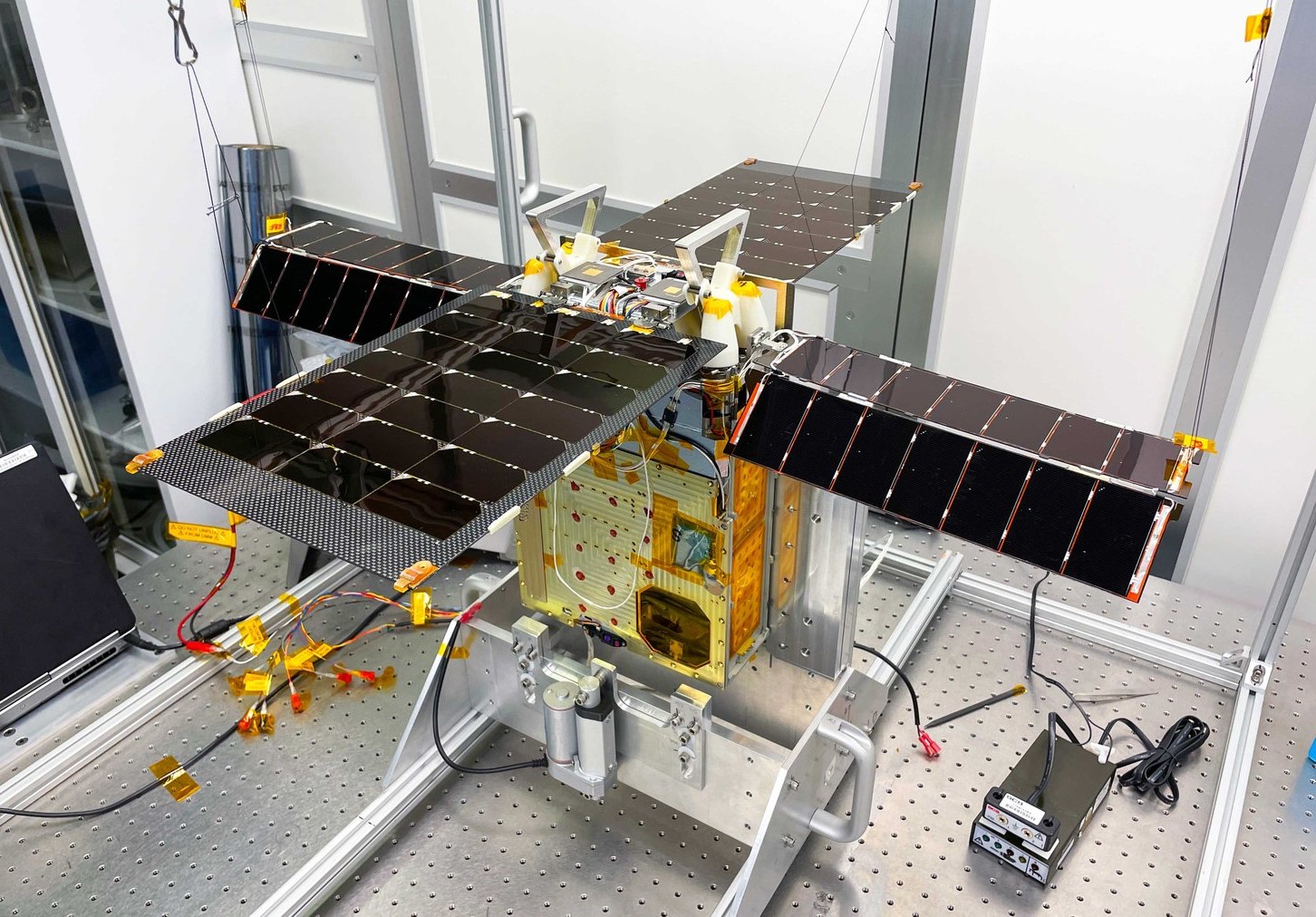
The Lunar Flashlight Cubesat | Photo Credit: NASA/JPL-Caltech
NASA’s Lunar Flashlight, a small cubesat satellite launched in December 2022, carries a critical quest in its briefcase-sized body: the search for water–and potential human habitability–on our Moon. As the spacecraft’s Co-Investigator, EPSS Professor David Paige is helping lead the charge.
Lunar Flashlight will search for lunar ice and frost at the Moon’s permanently shadowed South Pole, using lasers to light dark craters in pursuit of its water bounty. If water ice is found, it could be used as a resource for future lunar exploration and longer, more ambitious space missions. Instead of packing all their water, astronauts could collect ice while on the Moon, freeing up room for more scientific instruments and supplies on their spacecraft, and increasing the amount of time possible to spend in space. An analysis of the lunar ice found could also have fascinating scientific implications, potentially unveiling the history of water’s long-ago arrival on Earth and the Moon.
For more about this tiny cubesat and its mighty mission, see articles from:
You can also follow Lunar Flashlight’s mission updates on NASA/JPL at https://www.jpl.nasa.gov/missions/lunar-flashlight, and through the UCLA Lunar Flashlight website at https://www.flashlight.ucla.edu.
